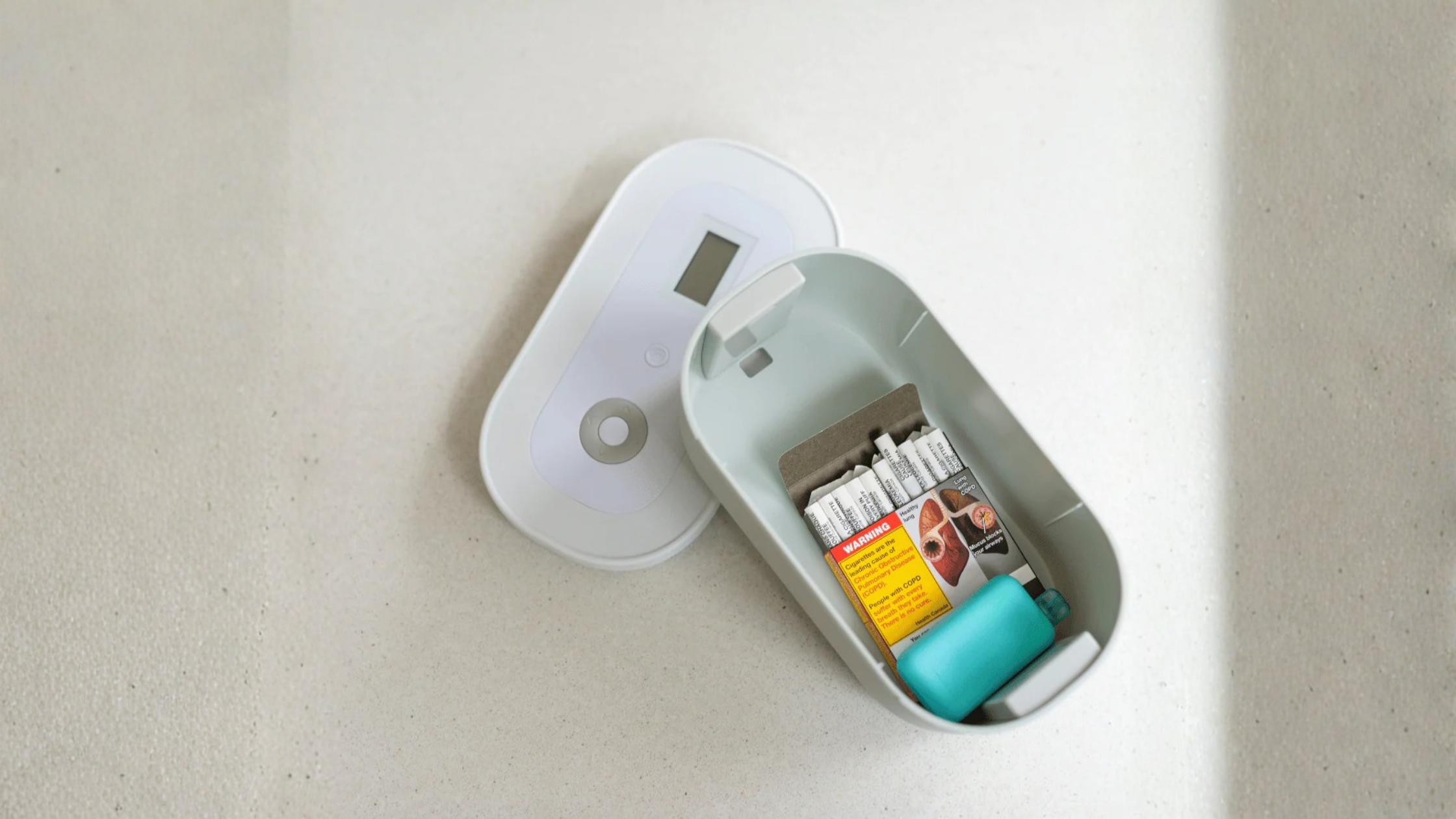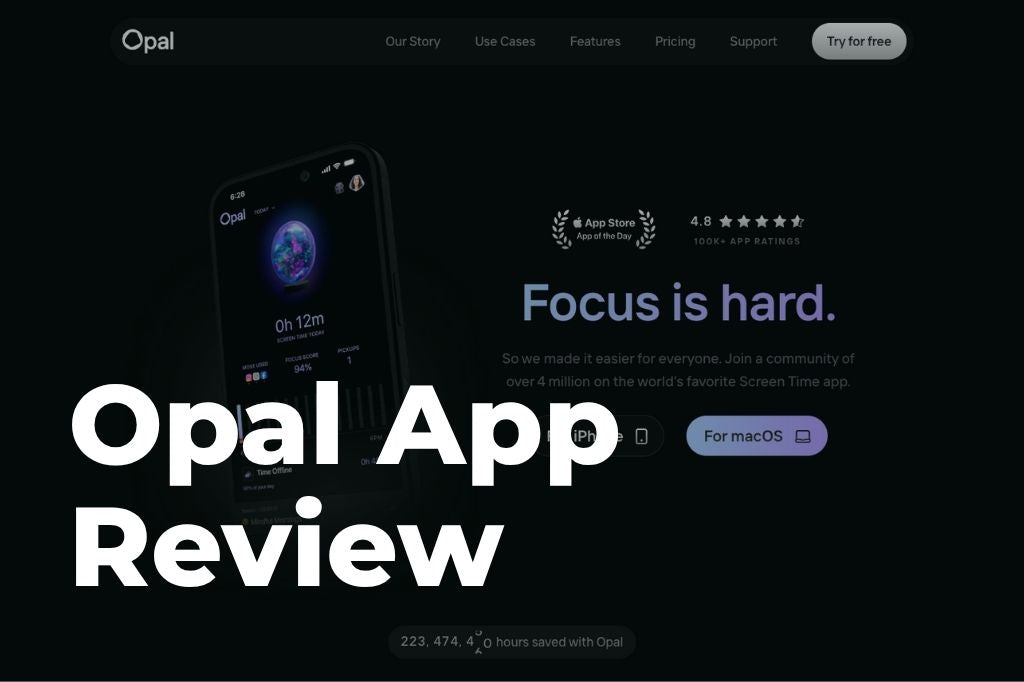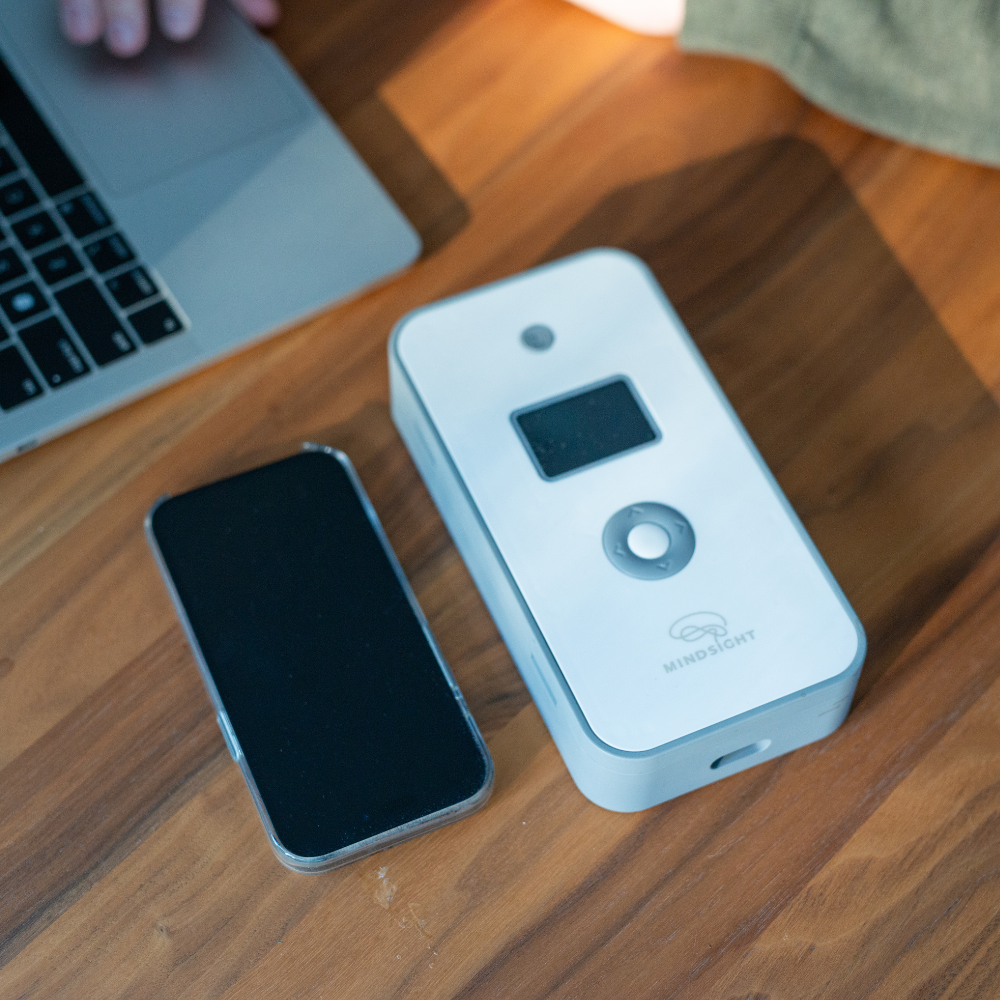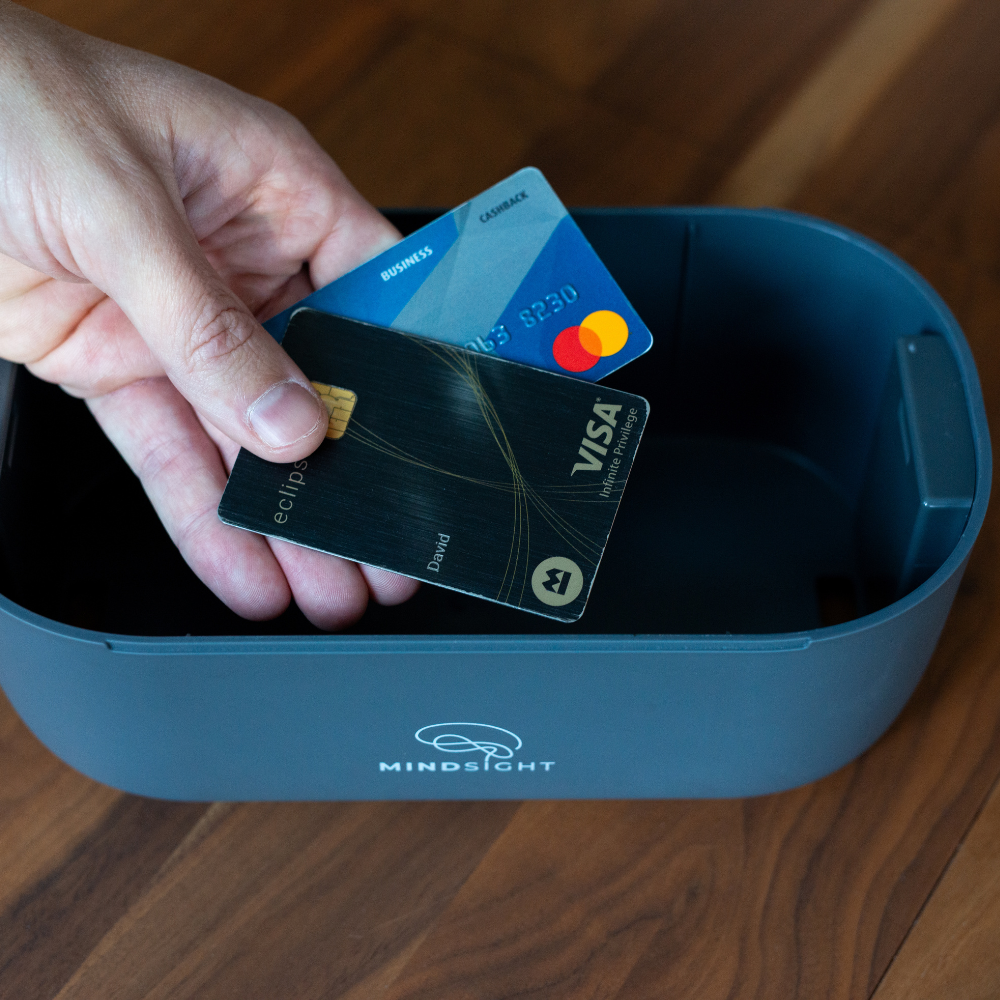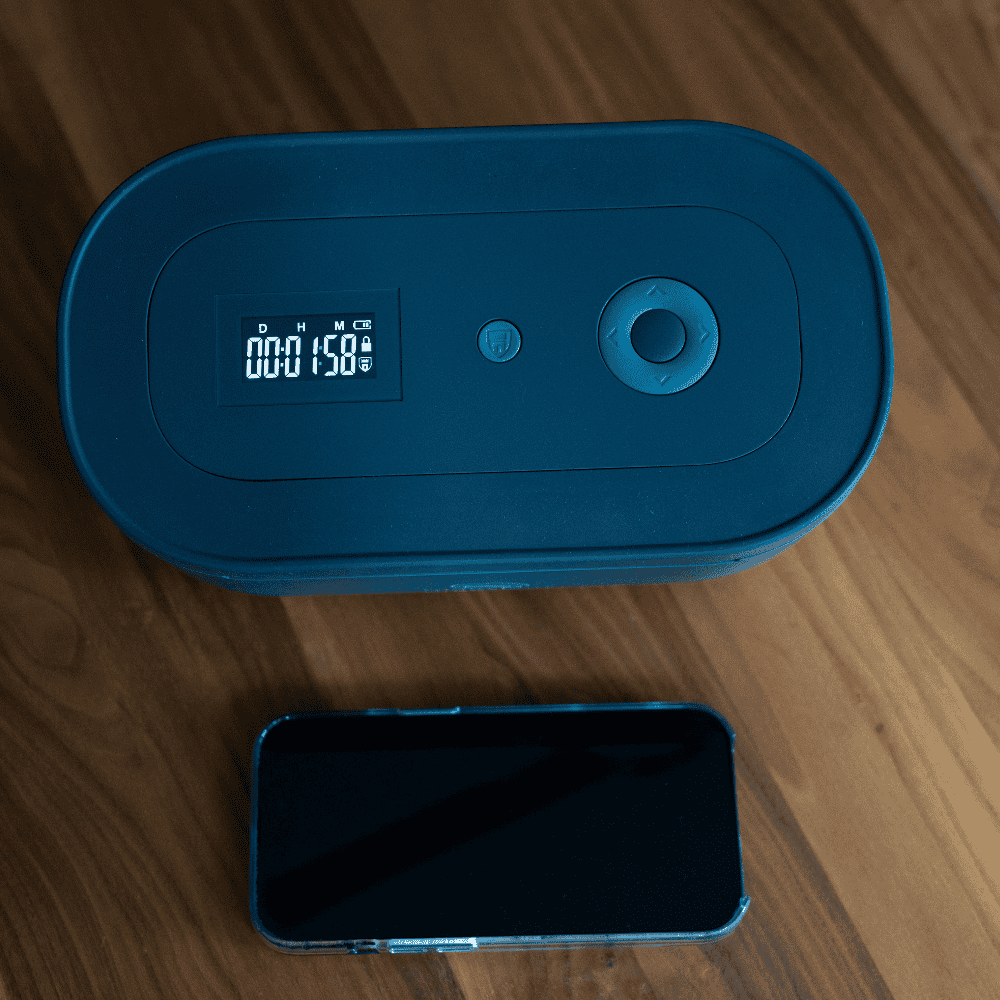Mindful Matters
The Fortress Mode Lifestyle: Extreme Accountability for Breaking Addictions
Why willpower isn’t enough — and how a timed lockbox makes Fortress Mode a reality. Table of Contents Introduction What Is the Fortress Mode Lifestyle? Why Extreme Accountability Works Better Than Willpower The Timed Lockbox: Your Fortress Mode Foundation How to Start Fortress Mode Today Stories & Scenarios Fortress Mode vs Other Self-Control Systems The Psychology Behind Fortress Mode Building Long-Term Success with Fortress Mode Conclusion Introduction Most people fail to break addictions not because they don’t care, but because they rely too heavily on willpower. The truth is: willpower is a limited resource, and once it runs out, old habits creep back in. That’s where Fortress Mode comes in — a radical lifestyle that uses extreme accountability to protect you from your own impulses. At the center of this system? The Mindsight Timed Lockbox, a practical tool that turns abstract discipline into real-world barriers. Fortress Mode is not about punishing yourself but about designing a system where success becomes the default and temptation loses its grip. What Is the Fortress Mode Lifestyle? Fortress Mode is a term popularized in online self-improvement and addiction recovery communities. The idea is simple: create a “fortress” around your life by removing access to your biggest temptations and triggers. Instead of relying on fragile willpower, you build an environment where destructive choices are physically impossible. In practice, this might mean putting your phone in a timed lockbox after 8 PM, or storing snacks out of reach during working hours. Isolation from triggers: keep harmful influences out of reach. Non-negotiable barriers: set rules that can’t be bent in moments of weakness. Accountability systems: enforce boundaries with tools and structures that protect your progress. People drawn to Fortress Mode are often those who have tried other strategies — apps, journaling, cold turkey attempts — only to relapse. The key difference is that Fortress Mode isn’t about trying harder. It’s about designing an environment where trying harder is no longer required. Why Extreme Accountability Works Better Than Willpower Addictions and destructive habits are fueled by dopamine-driven loops. Every time you scroll endlessly on your phone, snack mindlessly, or give in to another cigarette, your brain rewards the behavior with a hit of dopamine. Over time, the brain learns to crave that reward, making self-control harder and harder. When temptation is always within reach, it’s nearly impossible to say no every single time. That’s why extreme accountability is so effective: instead of debating whether or not to give in, you eliminate the decision entirely. “Out of sight, out of mind” isn’t just a saying — it’s a proven psychological principle. By reducing the number of decisions you need to make, Fortress Mode frees up mental energy for more meaningful choices, like building healthier routines or focusing on long-term goals. The Timed Lockbox: Your Fortress Mode Foundation The Mindsight Timed Lockbox takes Fortress Mode from theory to practice. By locking away your most tempting items for a set amount of time, you enforce accountability even when motivation fades. Unlike apps or mental tricks, the lockbox is a physical barrier. Once it’s locked, there’s no going back until the timer runs out — no loopholes, no excuses. Everyday Uses Locking up your phone to focus on deep work, enjoy distraction-free dinners, or sleep better at night. Storing snacks or junk food to stop late-night binges and make healthier eating effortless. Keeping vices like cigarettes, alcohol, or gaming controllers out of reach during craving windows. The lockbox transforms moments of weakness into opportunities for strength. By the time the craving passes, the decision has already been made for you: the temptation is locked away and your future self wins. How to Start Fortress Mode Today Starting Fortress Mode doesn’t require perfection — it requires commitment to small, consistent changes. Here’s a framework to get started: Identify your addiction trigger: Is it your phone? Food? A substance? Be honest about what pulls you off course most often. Create physical accountability: Use the lockbox, rearrange your environment, and reduce exposure to triggers in your daily routines. Set rules and stick to them: Define non-negotiable timeframes for locking items away. Start small and increase as your self-control strengthens. Track progress: Reflect weekly on wins, setbacks, and patterns. Adjust your system to make success easier over time. The goal is not to rely on endless discipline but to build guardrails that keep you moving forward, even on bad days. Stories & Scenarios Here’s how Fortress Mode might look in action: Phone addiction: Lock your phone for 4 hours every evening to reclaim your evenings for family, reading, or rest. After a month, you’ll notice calmer evenings and deeper sleep. Binge eating: Store junk food in the lockbox overnight so late-night cravings don’t derail your health goals. Over time, your brain learns not to associate the kitchen with midnight snacking. Smoking or drinking: Use the lockbox to delay access during peak craving windows. Even a 30-minute delay can weaken the automatic cycle and reduce total consumption. These examples show how Fortress Mode adapts to different struggles, always grounded in the same principle: accountability through restriction. Fortress Mode vs Other Self-Control Systems Many people try apps, parental controls, or sheer willpower to control their habits. The problem? These systems can be bypassed in moments of weakness. Apps can be uninstalled. Parental controls can be overridden. And willpower eventually runs dry. A physical barrier, like the Mindsight Timed Lockbox, removes the loopholes entirely. Once it’s locked, it stays locked until time is up — no exceptions. Unlike digital solutions, Fortress Mode builds resilience by making temptation physically impossible. Instead of spending energy fighting urges, you conserve energy for growth, focus, and healing. The Psychology Behind Fortress Mode At its core, Fortress Mode is about reshaping your relationship with desire. Research shows that when people reduce exposure to cues associated with addictive behaviors, cravings diminish over time. By strategically limiting access, you retrain your brain to seek pleasure from healthier sources. This gradual rewiring is what makes Fortress Mode sustainable — it’s not about brute force but about creating conditions where good choices become easier than bad ones. Think of it as designing your own behavioral ecosystem. Instead of battling your brain’s chemistry, you’re working with it, redirecting energy toward long-term rewards instead of short-term spikes. Building Long-Term Success with Fortress Mode The ultimate goal of Fortress Mode isn’t to live in restriction forever. It’s to build enough momentum that healthier behaviors become your new default. Over time, the lockbox may shift from being a daily necessity to an occasional safeguard — a tool you keep on hand for high-risk moments. By then, the structure of Fortress Mode will have done its job: breaking the cycle of addiction and replacing it with resilience. When paired with other growth practices like exercise, journaling, therapy, or mindfulness, Fortress Mode becomes part of a powerful toolkit for long-term recovery and personal growth. Conclusion The Fortress Mode lifestyle is about more than grit — it’s about building systems of extreme accountability that protect you when willpower fails. By combining the philosophy of Fortress Mode with practical tools like the Mindsight Timed Lockbox, you can break destructive cycles and create lasting change. Start Fortress Mode today. Build your fortress. Guard your future. Break free from destructive habits once and for all.
Learn moreOur Best Habit Tracker Ideas
Apps aren’t the only way—or even the best way—to build habits. This guide shares 25 habit tracker ideas and introduces three screen-free tracking tools, including the Mindsight Wellness Tracker.
Learn moreOpal App Review (2025): How It Works and Who It’s For
This is a hands-on Opal app review for 2025. You’ll learn what the app does well, where it falls short, and who it’s actually for.
Learn moreHow a Wellness Tracker Can Help You Build Better Habits
How a Wellness Tracker Can Help You Build Better Habits How a Wellness Tracker Can Help You Build Better Habits Harness the power of daily habit tracking to reinforce mindfulness, productivity, and self-improvement. - 4 minute read - In the journey toward self-improvement, tracking your habits can be a real game-changer. A wellness tracker provides you with a tangible way to monitor your daily activities, celebrate small victories, and ultimately build better habits. Over time, these small changes can lead to massive progress—a concept often described as the butterfly effect. The idea is simple: by consistently recording your daily actions, you begin to notice patterns and behaviors that either support or hinder your well-being. This awareness allows you to make informed adjustments that lead to lasting change. For a deeper understanding of how small, consistent changes can create monumental improvements, read this insightful article on the butterfly effect. Here are some key benefits of incorporating a wellness tracker into your daily routine: Enhanced Mindfulness: Regular tracking encourages you to reflect on your behaviors and be more present. Improved Productivity: By identifying which habits boost or hinder your performance, you can focus on what truly matters. Consistency in Self-Care: Daily check-ins help reinforce a routine that supports mental and physical well-being. Incremental Progress: Embracing small changes can lead to massive improvements over time, embodying the butterfly effect. Integrating a wellness tracker into your life transforms goal-setting into an engaging, interactive process. Each checkmark is a step towards a healthier, more balanced lifestyle. Whether you aim to boost productivity, reduce stress, or simply maintain a consistent self-care routine, this tool can be the catalyst for long-term success. "Have you noticed that small, consistent changes in your daily routine lead to massive progress over time?" Explore more self-improvement tips on our blog.
Learn moreWhy You Need (or Don’t Need) the Fortress Override Code
Why You Need (or Don’t Need) the Fortress Override Code Why You Need (or Don’t Need) the Fortress Override Code Explore the debate surrounding the Fortress Override code and decide whether its flexibility is a benefit or a drawback. - 4 minute read - The concept of a Fortress Override code introduces an interesting twist in the realm of self-discipline tools. With the Mindsight Timed Lock Box, users sometimes wonder if having a built-in override is a necessary safety net or simply an invitation to break through their own limits. On one hand, the override code can serve as a safeguard—a way to regain control when life’s unexpected emergencies arise. On the other hand, it might tempt users to bypass their self-imposed restrictions too often, diminishing the lockbox’s potential to foster strict focus and commitment. Here are some of the key insights about Fortress Mode: Deep Work & Digital Detox: Fortress Mode enforces strict time-locking to help you achieve uninterrupted deep work sessions. Enhanced Self-Discipline: It supports focus-boosting strategies and builds mental clarity by removing digital distractions. Emergency Override: While the override code offers flexibility in unforeseen situations, overusing it can undermine your productivity goals. Ideal For: Busy professionals, creative minds, and students who require clear boundaries to maintain self-discipline. Industry experts are mostly divided on the issue. For a deeper look into decision-making and self-regulation, consider this Oxford review article that discusses self control the cost of decision making. Ultimately, the decision to use—or not use—the Fortress Override code depends on your personal journey toward self-improvement. For more in-depth details on Fortress Mode and who it benefits, visit our product page here. "Have you found that the Fortress Override option makes you more aware of your own impulses and helps build a stronger, more disciplined routine?" Learn more about building self-discipline on our blog.
Learn moreHow to Quit Smoking or Vaping with a Timed Lockbox
How to Quit Smoking or Vaping with a Timed Lockbox How to Quit Smoking or Vaping with a Timed Lockbox Learn how scheduled delays can extend breaks between cravings and help you quit for good. - 4 minute read - Breaking free from smoking or vaping is challenging, but a timed lockbox may be just what you need. By locking away your cigarettes or vape devices for a set period, you create a pause between cravings, giving your body time to reset and your mind a chance to refocus. This method not only reduces the frequency of use but also gradually builds the self-control needed to quit entirely. As you experience longer breaks between urges, you begin to see the value of delaying gratification. Advantages include: Quit Smoking Tools: Build intervals that weaken habit loops. How to Stop Vaping: Create structured breaks that reduce dependency. Self-Control for Smoking: Strengthen your resolve with repeated practice. For more insights on overcoming addiction, read this Mayo clinic article. What has been your biggest challenge in quitting smoking or vaping, and how might a timed lockbox help? For more tips on quitting and self-discipline, visit our blog.
Learn moreParenting Hack: Using a Timed Lockbox to Limit Screen Time for Kids
Parenting Hack: Using a Timed Lockbox to Limit Screen Time for Kids Parenting Hack: Using a Timed Lockbox to Limit Screen Time for Kids A practical solution to help parents enforce healthy screen habits at home. - 3 minute read - In today’s digital world, managing your child’s screen time can be challenging. A timed lockbox provides a structured way to limit access to devices, helping kids develop healthier habits and better focus on offline activities. By locking away phones or tablets during homework or family time, the lockbox enforces a break that can lead to improved concentration and more engaging interactions. Over time, this practice helps establish boundaries that are beneficial for both children and parents. Benefits include: Parenting Tips for Screen Time: Set clear digital boundaries. How to Limit Phone Use for Kids: Encourage more face-to-face interactions. Child Phone Addiction Solution: Promote a balanced lifestyle. For additional strategies on managing digital habits, check out this Parents.com article. How do you currently manage screen time at home? For more parenting tips and hacks, visit our blog.
Learn moreHow to Use a Timed Lockbox to Stick to Your Budget & Stop Impulse Buying
How to Use a Timed Lockbox to Stick to Your Budget & Stop Impulse Buying How to Use a Timed Lockbox to Stick to Your Budget & Stop Impulse Buying Discover how a simple timed lockbox can curb impulse spending and keep your finances in check. - 4 minute read - Impulse buying can wreak havoc on your budget, leaving you with financial stress and regret. A timed lockbox offers a practical way to manage your money by temporarily locking away your credit cards or cash. This creates a deliberate pause that forces you to reconsider every purchase. By delaying access to funds, you reduce the likelihood of making spur-of-the-moment decisions. Over time, this habit can help you stick to your budget and develop better financial discipline. Key benefits include: Impulse Spending Solutions: Prevent unnecessary purchases by creating a buffer period. Financial Discipline Tools: Develop a routine that favors saving over spending. Stop Online Shopping Addiction: Reduce the temptation of digital impulse buys. Embracing this tool can be a game changer for your personal finances. For more financial discipline strategies, see this Forbes article. What spending habit do you struggle with the most, and how could delaying access to money help? For more tips on managing impulse buying and building financial discipline, visit our blog or explore our budgeting resources.
Learn moreThe Productivity Hack You Didn’t Know You Needed: Timed Lockboxes
The Productivity Hack You Didn’t Know You Needed: Timed Lockboxes Learn how locking away distractions can dramatically improve your focus and productivity. - 3 minute read - In a world filled with constant distractions, finding ways to stay focused is essential. A timed lockbox is one of the best productivity tools available—it forces you to put away your distractions, whether they’re your phone, gaming devices, or other temptations. By creating scheduled intervals where access to distractions is delayed, you allow yourself to concentrate on important tasks. This simple change can help improve your workflow, boost your efficiency, and enhance your overall productivity. Benefits include: Screen-Free Productivity: Enjoy uninterrupted work sessions. Focus Boost: Reduces the temptation to check your phone. Improved Concentration: Encourages deeper work and more effective time management. Integrating a timed lockbox into your routine is a small adjustment that can yield significant improvements. For other productivity tips you didn't know you needed, check out this Adults of Tomorrow article. What distraction do you struggle with most, and how might eliminating it boost your productivity? Explore more productivity tips on our blog and discover how to make every minute count.
Learn more
